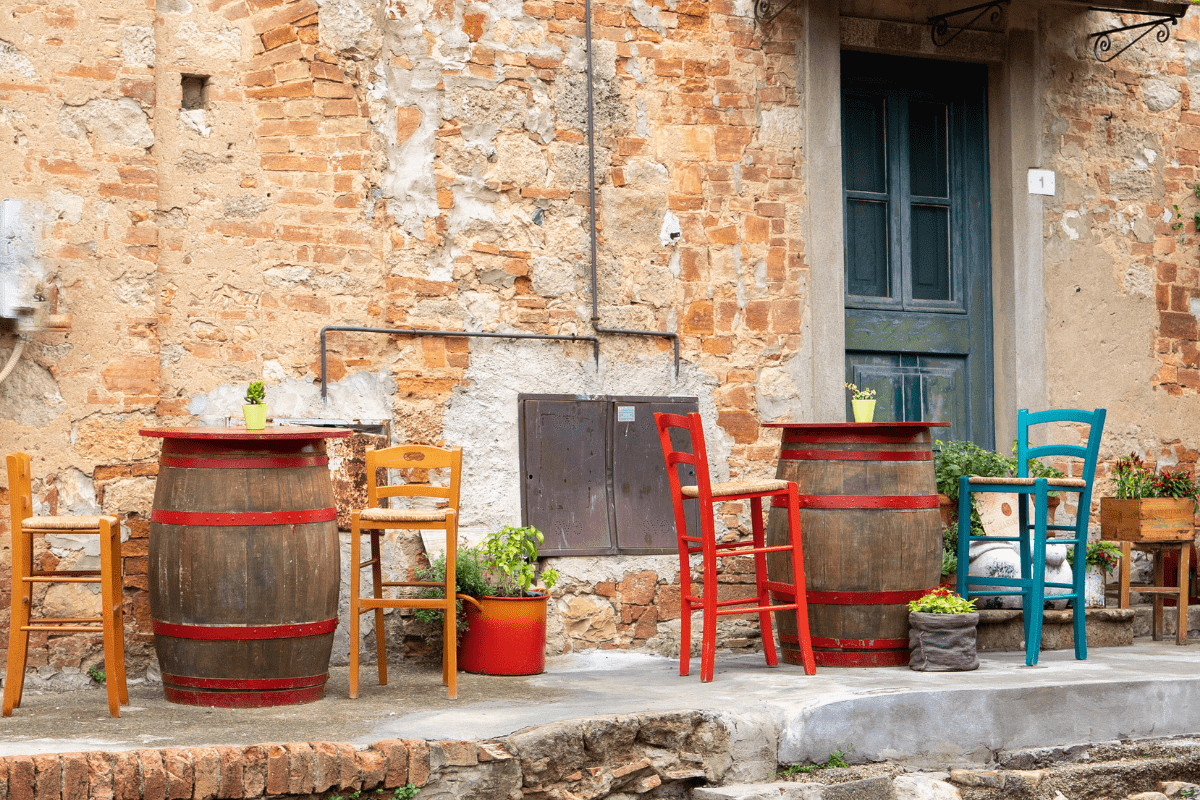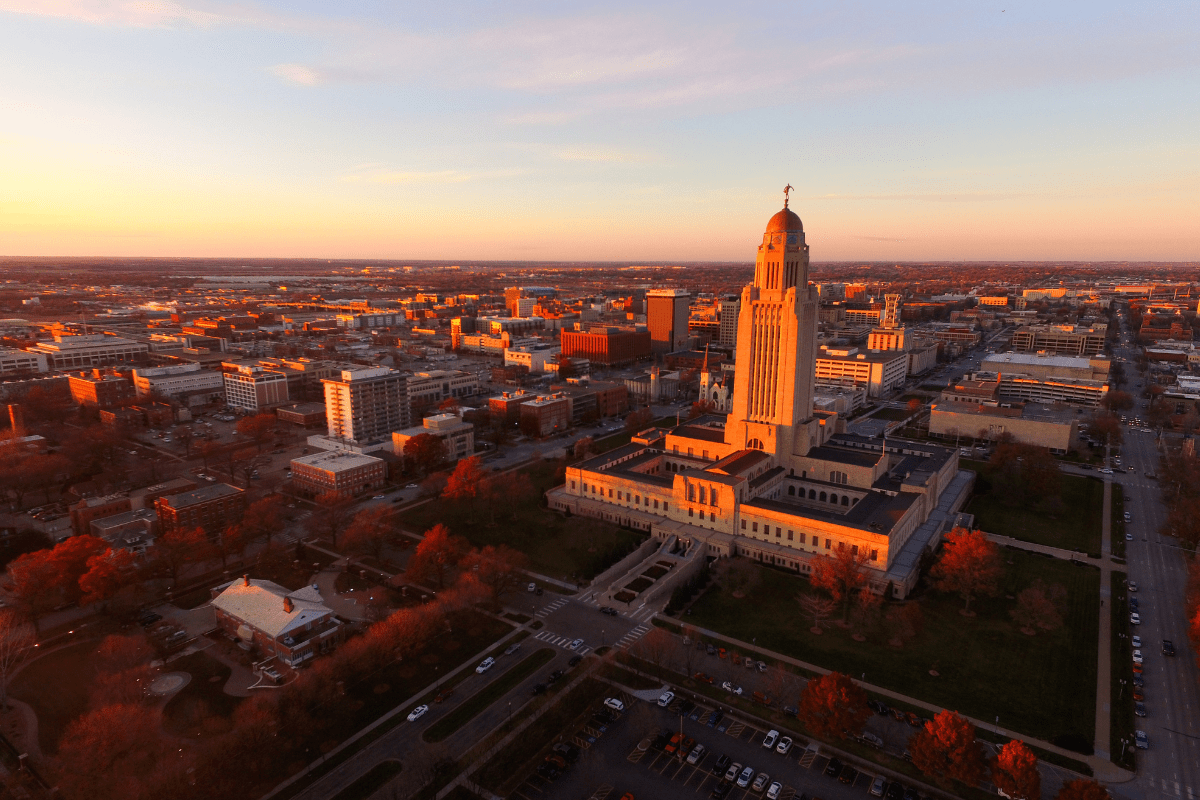Nebraska might not be the first place you think of for a culinary adventure, but these century-old restaurants have been quietly perfecting their recipes while coastal food trends come and go. From Omaha steakhouses where cattle barons once sealed million-dollar deals to small-town soda fountains that invented America's favorite sundae, these time-tested establishments offer something you can't find on any food delivery app: a genuine taste of the American heartland served with a side of living history.
The heavyweight champions of Nebraska dining
Before we dive into the smaller gems, let's talk about the restaurants that put Nebraska on the culinary map. These aren't just old restaurants that happen to still be open… they're institutions that shaped how America eats beef.
Johnny's Cafe: Where stockyard workers became steak connoisseurs
Johnny's Cafe in Omaha has the kind of origin story that sounds made up but isn't. Polish immigrant Frank Kawa opened this place in 1922 because he literally couldn't afford to change the "Johnny's" sign that was already painted on the building. Talk about making lemonade from lemons. The tiny 10-seat saloon at 27th and L Streets grew into South Omaha's most beloved steakhouse, and Frank's accidental name choice became a century-old brand.
During the stockyards' heyday, this place ran 20 hours a day. Picture this: muddy-booted meatpackers grabbing breakfast at 4 AM, businessmen making deals over lunch, and cattle barons celebrating successful auctions with prime rib dinners. Frank even did nine months in jail during Prohibition for bootlegging, though he swore he "only sold soda pop beverages." Sure, Frank. We believe you.
The restaurant's current features tell its history better than any museum:
- T-bone shaped support columns (subtle, right?)
- Authentic cattle brands from Nebraska ranches
- Those famous brass steer horn doors from the 1970s
- Handmade soups and desserts using original recipes
- Thanksgiving dinner served every single Thursday
Third-generation owner Kari Harding puts it perfectly: "It's fun to be part of people's history. Their grandparents had their wedding breakfast here or got engaged here." The place even got its Hollywood moment in Alexander Payne's "About Schmidt", cementing its status as more than just a restaurant… it's Nebraska's dining room.
Ole's Big Game Steakhouse: Your vegetarian friend's nightmare
If you've ever wanted to eat a steak while being stared at by 200 dead animals, boy do I have the place for you. Ole's Big Game Steakhouse in Paxton opened at exactly 12:01 AM on August 9, 1933, the moment Prohibition ended. Founder Rosser "Ole" Herstedt clearly had his priorities straight.
Ole spent decades traveling the world collecting trophies, including a polar bear from Russia's Chukchi Sea, a giraffe nicknamed "Ginger," and a python from Honduras. The walnut bar? He won it in a baseball game in Colorado. This place is basically what happens when your eccentric uncle's man cave becomes a successful restaurant.
The restaurant almost moved to South Carolina in 1988, but 28-year-old local farm boy Tim Holzfaster saved it. As he explains, "Ole's is not just some restaurant that could pick up and move and be successful anywhere else." He's right… where else would employing 72 people in a town of 500 make sense?
Celebrity visitors have included boxer Jack Dempsey, actor Robert Duvall, and Miss Kitty from Gunsmoke, but most customers are I-80 travelers who take the exit expecting a regular truck stop and get… this. The chicken-fried steak has what locals call a "mammoth following", which feels appropriate given the décor.
The neighborhood legends and lost treasures
Not every historic restaurant needs dead animals on the walls to make an impression. Some just need a really good marinade or the ability to make you cry over dumplings you'll never taste again.
The Drover: Where whiskey met steak and magic happened
The Drover in Omaha revolutionized the steakhouse game in 1979 when Bob Anderson figured out that marinating steaks in whiskey for exactly 15 minutes creates meat so tender you could cut it with a harsh look. This windowless former speakeasy maintains its mysterious vibe with dim lighting and multiple intimate dining rooms that make you feel like you're conducting some sort of delicious illegal business transaction.
The western memorabilia on the walls and the fact that you can't see outside creates this time-warp effect where it could be 1979 or 2024 and you wouldn't know the difference. After surviving a 2018 fire, The Drover proved that Omahans will literally rebuild restaurants from ashes if the steaks are good enough.
Bohemian Cafe: The one that got away
Here's where things get sad. Bohemian Cafe closed in 2016 after 92 years, and Omaha's Czech community is still not over it. Founded by Louis Macala in 1924, this place greeted everyone with "Vitame vas" (we welcome you) and served Czech specialties while servers wore traditional costumes that made you feel like you'd stumbled into your Czech grandma's house… if your Czech grandma ran a restaurant and had excellent taste in ceramic tiles.
Four generations of the Kapoun family worked there together, maintaining recipes for bread dumplings and liver dumpling soup that you literally cannot find anywhere else in Nebraska now. Bright Eyes' Conor Oberst was a regular who'd stop by before shows at Sokol Auditorium. The building now houses other businesses, though Czech Inn tries to maintain some traditions. It's not the same, but at least Little Bohemia got added to the National Register of Historic Places in 2020, so there's that.
Small towns, big flavors
You haven't really experienced Nebraska until you've driven two hours to a town of 300 people for ice cream. These small-town treasures prove that population size has absolutely nothing to do with culinary significance.
Coney Island Lunch Room: Where hot dogs are serious business
Since 1933, Coney Island Lunch Room in Grand Island has been doing one thing really, really well: coney dogs. Greek immigrant George Katrouzos Sr. bought the place for $600 and created a chili recipe that hasn't changed in 90 years. They dice over 50 pounds of onions weekly and serve hundreds of hot dogs daily.
The honor system here is beautiful… customers just tell the cashier what they ate, no bills or checks. This only works in places where everybody knows everybody, and lying about your coney count would basically be social suicide.
Want proof this place matters? CNN covered the story of a daughter shipping coneys to her dying father in California. His last request was a Coney Island malt. His daughters served coney dogs at his funeral. If that doesn't tell you everything about this place's importance to Grand Island, nothing will.
Their success formula according to current owner George Katrouzos:
- Fresh cut potatoes daily
- Fresh diced onions (never pre-cut)
- The exact same chili recipe
- Zero changes to anything, ever
Potter Sundry: Home of accidental dessert genius
In the 1930s, a bored high school kid named Harold Dean "Pinky" Thayer was working at his pharmacist father's soda fountain in Potter (population: 300) when he accidentally invented the Tin Roof Sundae. He just threw together vanilla ice cream, chocolate syrup, chocolate ice cream, marshmallow cream, and Spanish peanuts, naming it after either the tin ceiling tiles or the tin-roofed stable across the street. Local historians still argue about this, which tells you everything about small-town Nebraska.
The 1916 building has been lovingly restored with the original wood casing around the soda fountain and those famous tin ceiling tiles still intact. Memorial Day weekend can see 50+ Tin Roof Sundaes sold, with people driving from California just for authentic sundaes. The place now anchors Potter's "Tin Roof Creative District," which is probably the only creative district named after ice cream.
Sandhills hospitality (where cowboys still eat)
The Sandhills region of Nebraska is essentially Mars with cows, and the historic hotels out here have been feeding ranchers and travelers since horses were the only horsepower available.
Hyannis Hotel: Presidents and cowhands welcome
The Hyannis Hotel Restaurant has been serving Grant County since 1898, when Sherman Sears built it to accommodate ranchers bringing cattle to the Burlington railroad. The Greek Revival and Second Empire architecture earned it a spot on the National Register, but the real history is in the details: separate entrances for men (north door) and women (south door) because Victorian propriety, and a third floor full of cheap rooms for cowboys.
Theodore Roosevelt stopped here during his 1904 campaign, which remains Hyannis's only presidential visit. These days, it's all about Saturday prime rib specials and Tuesday Mexican menus for locals and Highway 2 travelers exploring the Sandhills Journey Scenic Byway. The pictorial history displayed throughout makes you feel like you're eating in a museum that happens to serve really good food.
Bassett Lodge: Mid-century modern meets cattle auction
Built during the 1949-1951 cattle boom, Bassett Lodge and Range Café is what happens when someone decides rural Nebraska deserves nice things. Architect Thomas Galleher wrapped his Streamline Moderne design around an existing 1925 hotel, creating 60 rooms with mahogany paneling, birch doors, and heated floors… luxury amenities that must have blown ranchers' minds in the 1950s.
New owners Denny and Lynne (as of January 2024) are maintaining the time-capsule atmosphere complete with original green couches and mid-century furnishings. They claim the "best breakfast in the Sandhills", which is a bold claim in a region where breakfast is basically a religion.
Why these places actually matter
Look, I could tell you about Misty's in Lincoln where Warren Buffett orders the same T-bone and Cherry Coke every time, or Glur's Tavern in Columbus (Nebraska's oldest bar), but here's what really matters: these restaurants survive because they're more than businesses. They're where Nebraska stores its memories.
Johnny's Cafe hit 100 years by feeding everyone from stockyard workers to movie stars without changing who they are. The Drover survived a fire because people need their whiskey steaks. Small towns rally around places like Potter Sundry because sometimes a Tin Roof Sundae is worth more than economic sense.
These places face real challenges:
- Rising property taxes
- Family succession planning nightmares
- Changing demographics
- Competition from chains
- The reality of running a restaurant (it's hard, folks)
But they persist through pure stubbornness and community support. When Bohemian Cafe closed, it left a Czech-sized hole in Omaha's culinary landscape that still hasn't been filled. That's your reminder to visit these places while you can.
Your actual guide to visiting
Here's the thing: you can't hit all these places in one trip unless you have a week and a serious appetite. But here's how to make the most of your historic Nebraska restaurant tour:
The I-80 Corridor Route: Start with breakfast at Johnny's Cafe in Omaha (yes, they serve breakfast), hit Ole's in Paxton for lunch and trophy gawking, then circle back to The Drover for whiskey steaks at dinner. Your vegetarian friends will hate you but your Instagram will be legendary.
The Small Town Sampler: Make Grand Island your base, hit Coney Island Lunch Room for those famous dogs, then drive to Potter for a Tin Roof Sundae. It's a full day but worth it for the "I drove 100 miles for ice cream" bragging rights.
The Sandhills Adventure: This requires commitment. Plan a weekend hitting both Hyannis Hotel and Bassett Lodge, timing it with a Saturday for prime rib at Hyannis. Bring your cowboy boots and acceptance of long, beautiful, slightly boring drives.
Essential intel for all visits:
- Call ahead… some of these places have quirky hours
- Bring cash… not everyone takes cards
- Order what they're famous for first visit
- Ask locals for stories… they all have them
- Don't be in a hurry
The bottom line on Nebraska's historic restaurants
These aren't places trying to be historic or authentic or charming. They just are. In a world of Instagram-ready restaurants designed to photograph well and last maybe five years, Nebraska's century-old establishments offer something radical: consistency, community, and food that tastes like it always has.
Whether it's Johnny's maintaining their grandfather's recipes, Ole's refusing to move their trophies, or Potter still making sundaes the way Pinky did, these restaurants understand something important. Sometimes the best innovation is no innovation at all. Sometimes the secret ingredient really is just time, tradition, and the stubborn refusal to change what works.
So yeah, you could eat at another chain restaurant, or you could drive to Nebraska and eat where Teddy Roosevelt campaigned, where cattle barons celebrated, where Czech grandmas cooked, and where a bored teenager accidentally invented dessert history. Your choice, but I know which story I'd rather tell.





